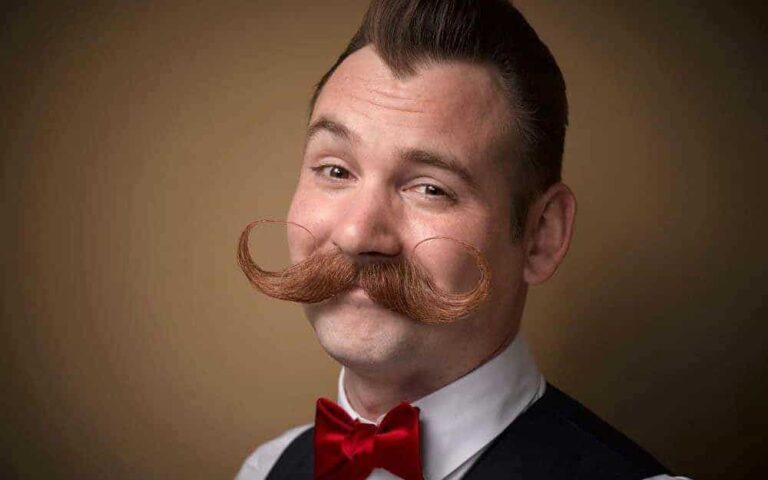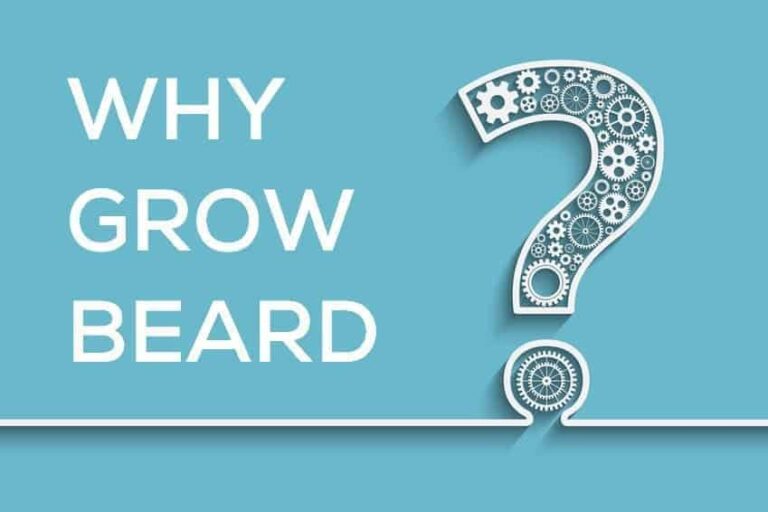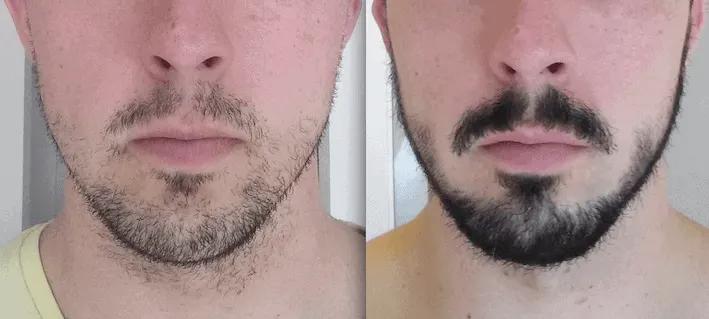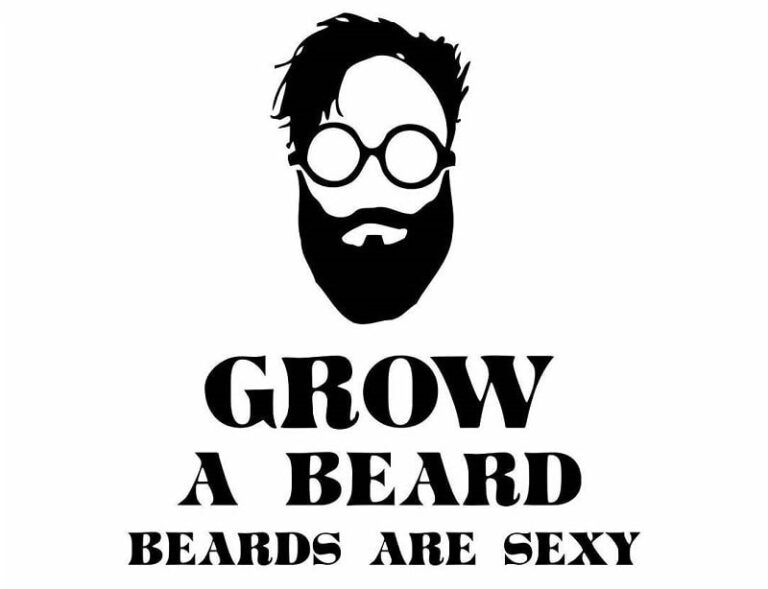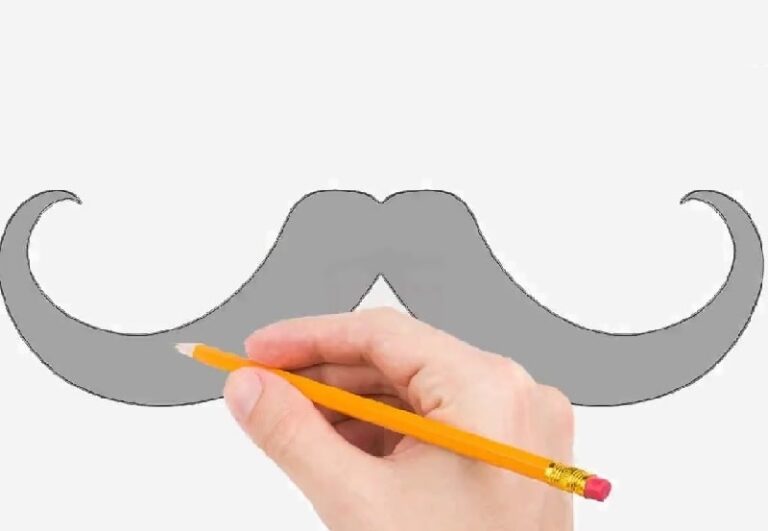Van Dyke Beard: Top 25 Styles + How To Guide
The Van Dyke beard has been around for centuries. It was made famous by a Flemish painter, Anthony Van Dyke, who always wore his facial hair in this style.
It is now making a big comeback as more celebrities and sportsmen choose to wear their facial hair in this unique style.
What Is a Van Dyke Beard?
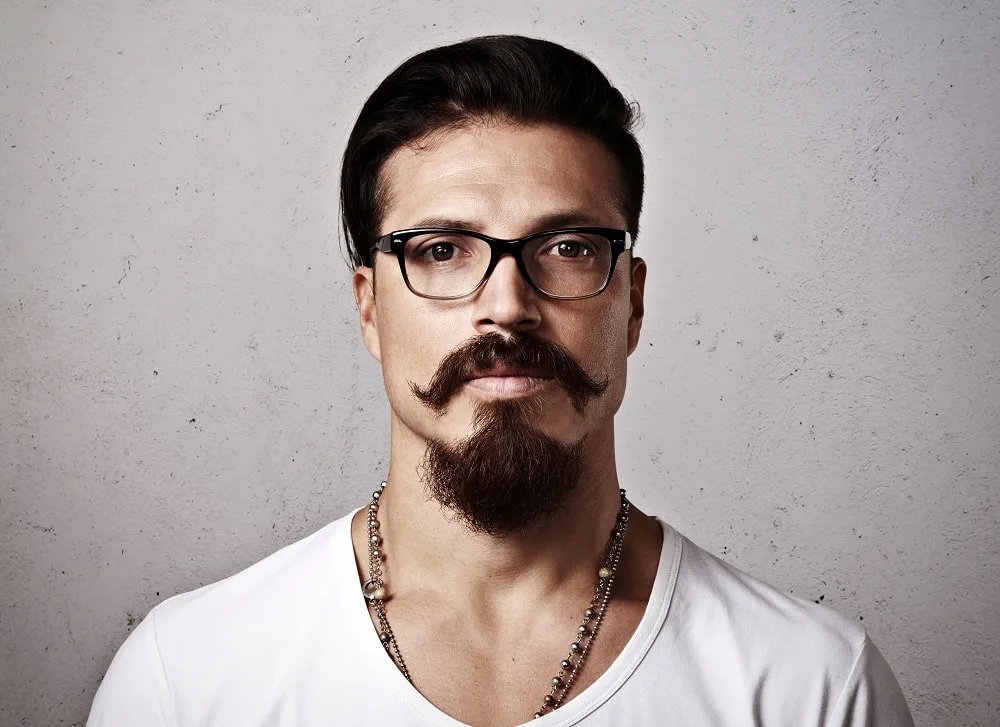
The Van Dyke beard has been enhancing men’s faces since it was made famous by Flemish painter Anthony Van Dyck in the early 17th century. A van dyke beard is
A van dyke is a more dramatic variation of the goatee beard style that features a separated mustache and beard. The mustache grows past the corners of the mouth and the beard grows long and pointed, often extending below the chin.
Van dyke beard is narrowed at both ends, resembling the convex shape and there is no hair grown on the cheeks or jawline. It is often blended with the soul patch at the upper end.
A well-sculpted Van Dyke hits that elusive sweet spot between sophistication and swagger. That may explain why men of all stripes seem to gravitate to it, from artists to Old West gunslingers.
Will a Van Dyke Beard Suit My Face Shape?
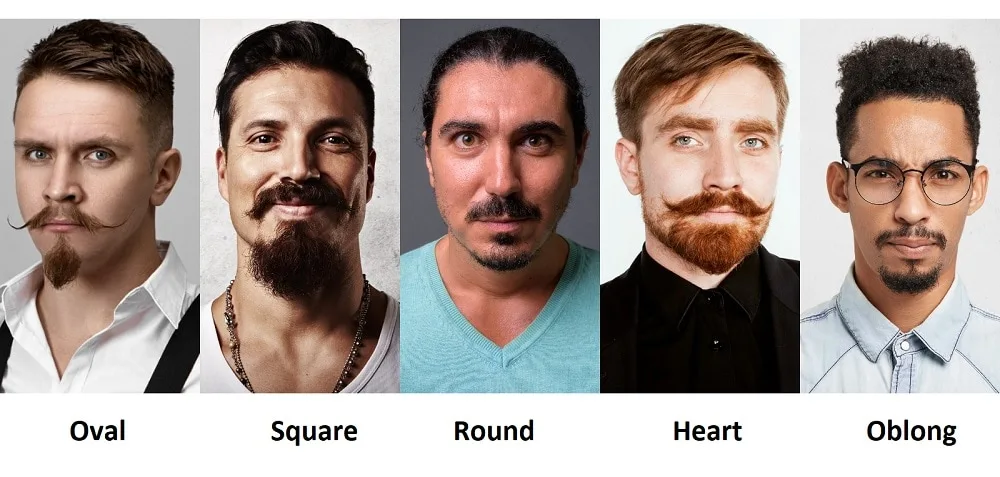
One of the niftiest things about Van Dyke facial hairstyle in all its various forms is that it complements so many different sorts of faces so well. That said, the style does more favors for certain face shapes than others.
Oval Faces
Van Dyke beards are an ideal choice for men with oval faces, owing to the versatile nature of their well-balanced contours. If you have an oval face shape, chances are you’ll be able to pull off just about any of the major variations (you lucky dog).
Square Faces
Square faces are another excellent medium for Van Dyke beards, as their regular symmetry keeps any one part of the facial hair from being overemphasized. Soft, fuzzy styles are especially useful for offsetting especially angular jaws.
Round Faces
Round faces can benefit from the illusion of length produced by taller, narrower Van Dykes (think the iconic Guy Fawkes mask from “V for Vendetta”). Unrestrained growth can have the opposite effect, however, so be sure to keep your trimmer charged.
Oblong Faces
In contrast with round faces, men with more vertical features should beware of configurations that create excess length, such as the so-called Mistletoe Mustache.
If you’ve got an oblong melon, your best bet is to opt for a wide, bushy Yosemite Sam-esque handlebar mustache or maintain a goatee that spans your entire jawline.
Heart-Shaped Faces
Heart-shaped faces are often characterized by under-pronounced chins, meaning mammoth mustaches will take up too much valuable facial real estate. Instead, keep your ‘stache in check and prioritize the volume and taper of your goatee to build up your lower jaw area a bit.
Men with diamond-shaped faces, or those marked by prominent bone structure and a multitude of sharp angles, need not miss out on the fun of growing a Van Dyke beard.
The trick is to stay away from wide mustachios and use longer, thicker growth to counter more severely etched lines.
Triangular Faces
Like, men with triangular faces need to be mindful of not adding to their natural length. An expansive mustache can do wonders when it comes to balancing out a long, pointy chin.
Keep your chin hair trimmed, as the angles of your jaw should be enough to achieve that signature Van Dyke arrowhead point alone.
How to Grow a Van Dyke Beard
If you’re thinking about trying out a Van Dyke beard, your first step will be to stop shaving. If you’re already walking around with a full beard, feel free to skip ahead to the next section.
Depending on how fast your facial hair comes in, we recommend waiting at least two months before attempting to sculpt a proper Van Dyke. This will give you enough time to establish a decent base level of growth.
Also, the more hair you have, the wider your margin of error will be once you start shearing.
How to Trim a Van Dyke Beard
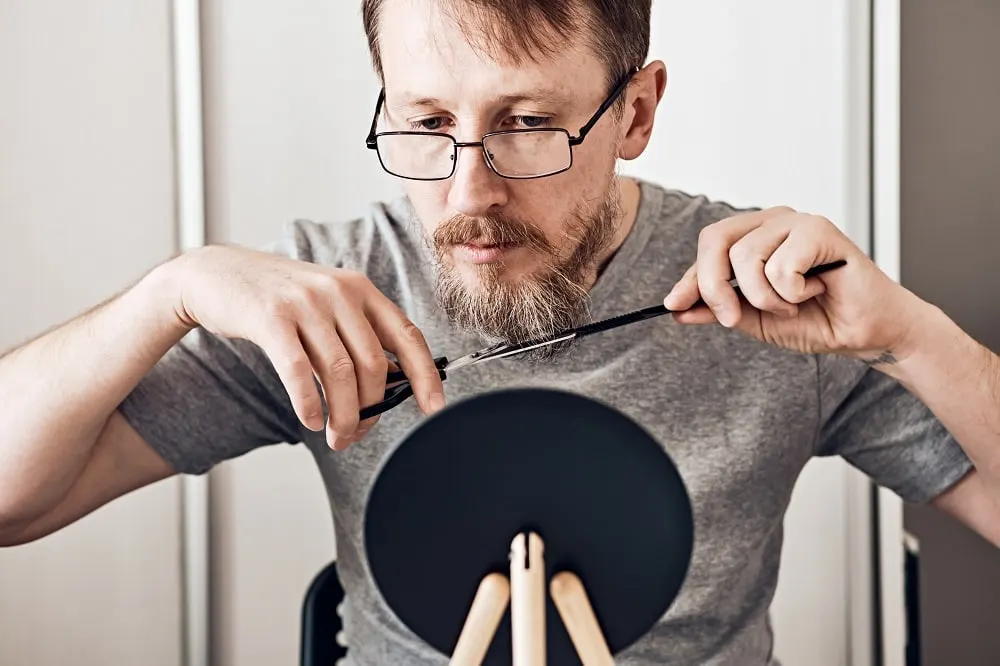
Once you’re sufficiently furry, your next step will be to shape the unruly growth into something that says “charming rogue” rather than “too lazy to groom.”
The whole art of the Van Dyke lies in how it’s manicured.
A traditional Van Dyke beard calls for all hair on the cheeks to be removed. Unless you’re going for some sort of peculiar D’artagnan/Jeremiah Johnson hybrid (which is definitely a thing), you should therefore start by giving yourself a clean shave above the jawline on both sides of your face.
From there, the sections you choose to emphasize or downplay and how much hair you remove to do it is your call.
You could, for instance, get rid of all growth on the cheeks and upper jaw and crop everything else somewhat closely to lend yourself a more stately bearing.
Or you could give your mustache and goatee a head start but let the rest grow in around it so that your chin and upper lip regions remain accentuated.
Handlebars, no handlebars; soul patch, no soul patch; neat, overgrown—it’s entirely up to you.
There are only two constraints you’ll need to observe if you want to do it right: disconnecting your mustache from your chin hair and making sure your goatee tapers to a fine point. These are the hallmark components of a true Van Dyke beard and are more or less non-negotiable.
Best Van Dyke Beard Styles
A Van Dyke beard style is normally categorized by a separate beard and mustache. The style is usually quite narrow with most of the facial hair sitting on the end of the chin.
Cheek hair and sideburns are usually avoided in a classic van Dyke look, but modern beard wearers have changed the rules a bit! Below are some of the subtle Van Dyke beard style variations.
#1: Anchor

For a nautical-themed beard, style your facial hair into an anchor shape. The beard style curves around under your chin and then join up to your mustache with a narrow strip of hair under your lips.
#2: Patchy Goatee

For a subtle take on the Van Dyke beard style, fashion your beard into a patchy goatee beard style. Keeping your hair thinner gives the style less intensity and means that it is suitable for lots of different occasions.
#3: Pointed Van Dyke
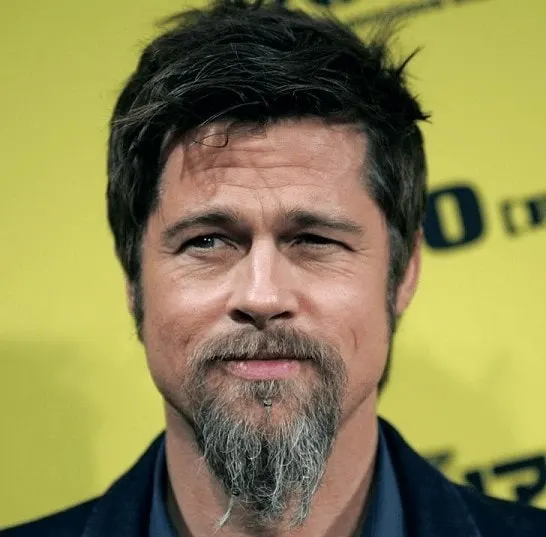
A pointed beard style can elongate your face. Style your beard so that it tapers at the end to give a really pointed look. Any style that is good enough for Brad Pitt is the height of fashion!
#4: The Johnny Depp

This style has become synonymous with Johnny Depp because he has sported this look for a number of years. He likes to keep the hair on his chin short and patchy for a real Bohemian look.
#5: Intense Depp Style

Johnny Depp’s look has more intensity when he grows his beard slightly thicker. His Van Dyke beard style really suits his thin facial features.
#6: Sloped Goatee
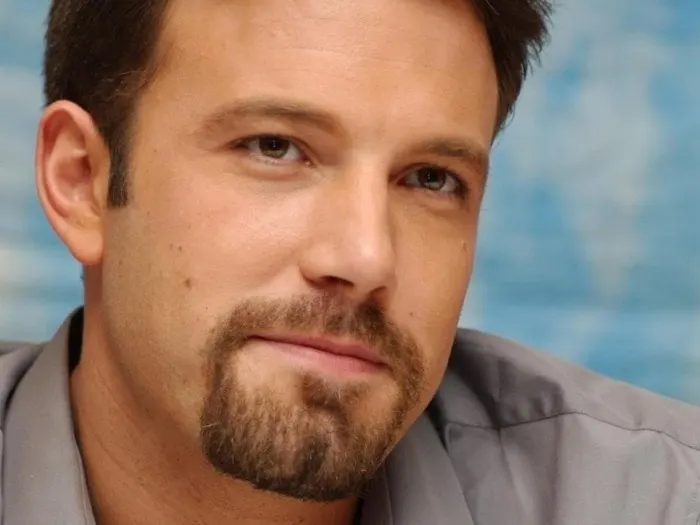
For a sloped goatee look, make sure that your mustache is wider than the beard section of your facial hairstyle. This type of van Dyke beard style will make your face look softer and more approachable.
#7: Anchor with Stubble
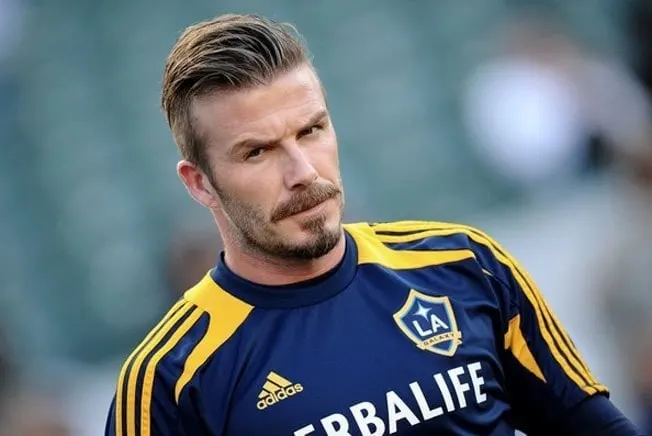
Although a classic Van Dyke beard should not include any hair on the cheeks, we can just about accept it on David Beckham. The stubble helps to give the Anchor beard style a rough and ready look.
Read: Beard Types: Did You Know All These?
#8: The Van Dali
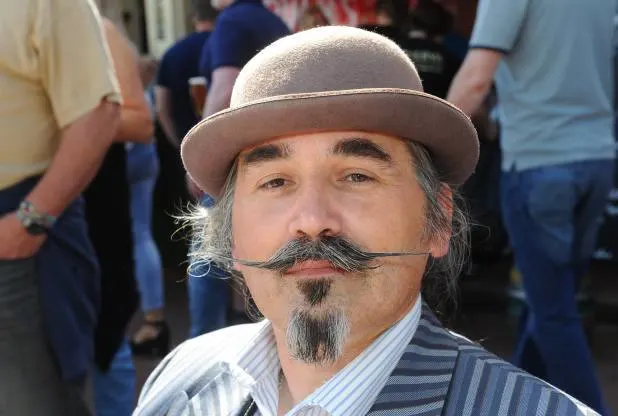
A Dali mustache is one which has been teased into a long thin shape. The mustache pairs up really well a van Dyke chin puff. These two styles give a really quirky facial hairstyle.
#9: Disconnected Goatee with Light Stubble

Grow your beard and mustache so that there is a slight disconnect between two areas of hair. Adding a little bit of stubble to the look helps to create a very subtle version of the Van Dyke beard.
#10: Texas Van Dyke Beard
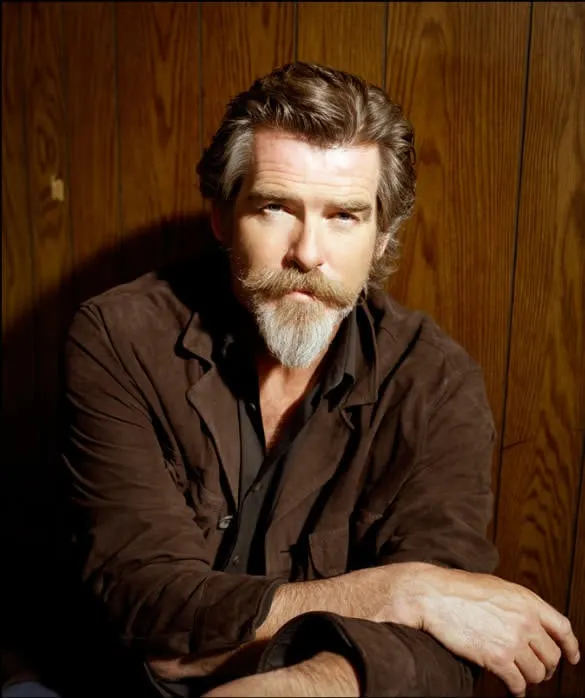
For a Texan cowboy style, tease your beard so that it grows to a point. Groom your mustache so that it is very bushy and distinct from the rest of your facial hair.
#11: Cylinder Chin Puff
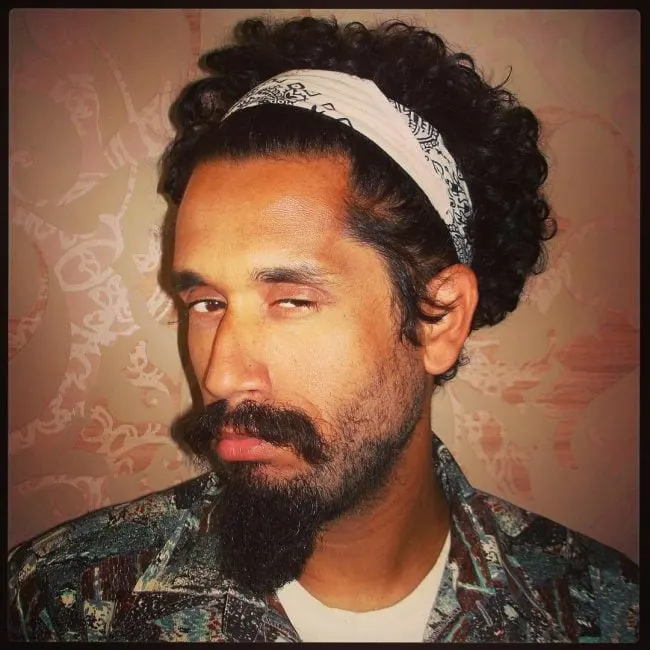
Instead of teasing your beard into a point at the end, keep it thick and rounded. This beard style is reminiscent of the 1960’s and 1970’s and is perfect for chilled-out, laid-back guys.
#12: Modern Colonel

Colonel Sanders has a very distinctive look, but some style icons think that it is a bit dated. Luckily, it is possible to give this beard style a modern twist with careful grooming.
#13: Skinny Chin Puff
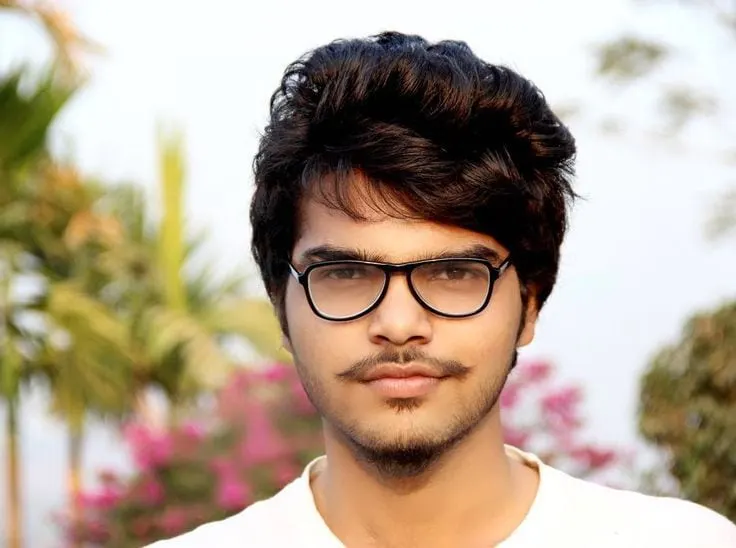
If you don’t want to commit to a full-on Van Dyke beard, try this gateway look instead. A few wispy hairs create a non-threatening beard style which is perfect for those who want a softer look.
#14: Wide Anchor Van Dyke

The Wide Anchor style is a little bit different from a normal Van Dyke beard as it covers the whole width of the chin. This beard style has a little bit of a retro touch to it.
15. Extended Van Dyke with Handlebar Mustache
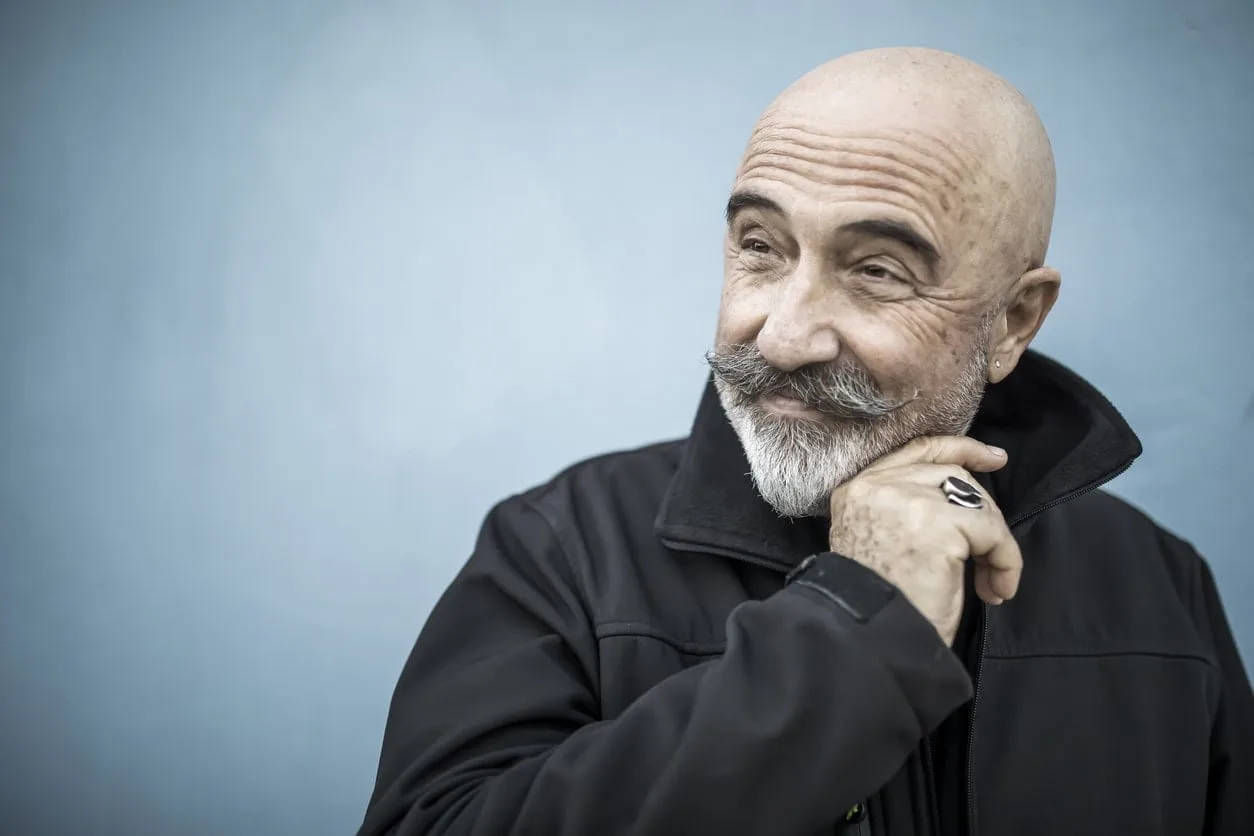
This is a style where the goatee extends up to the sideburns and connects to the hair on the jawline, creating a V-shape. It is paired with a handlebar mustache, which is styled to curl upward at the edges.
16. Inverted Spade Shape Van Dyke Beard
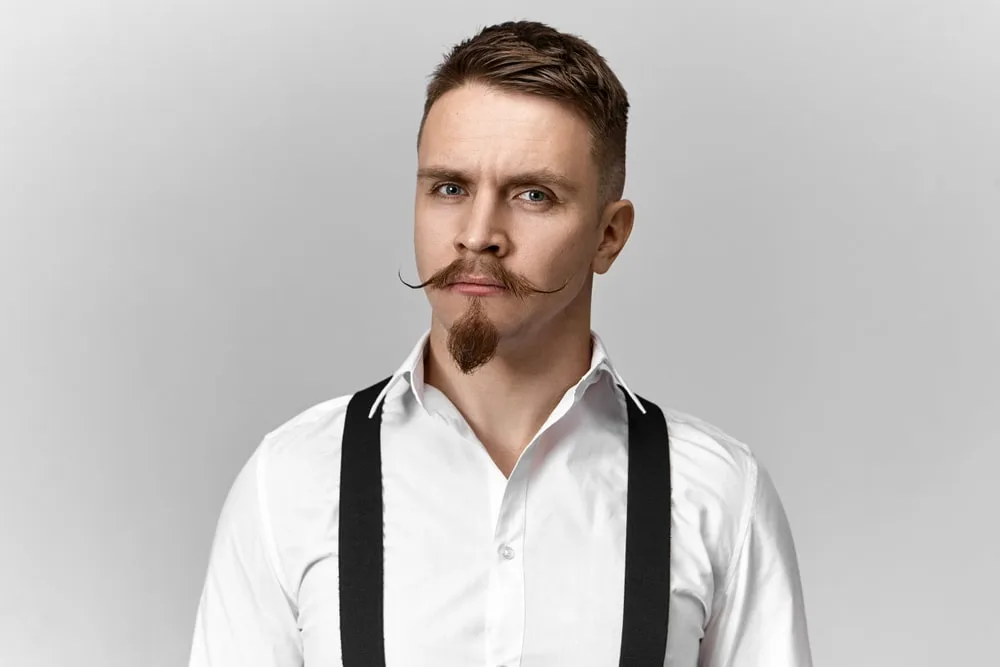
The hair on the chin is trimmed to create a narrow tuft of hair that tapers at both ends, resembling an inverted spade. The edges of the goatee are kept thin and the upper edge blends with the soul patch. There is usually no hair grown on the cheeks or jawline.
17. Landing Strip Van Dyke Beard with Chevron Mustache
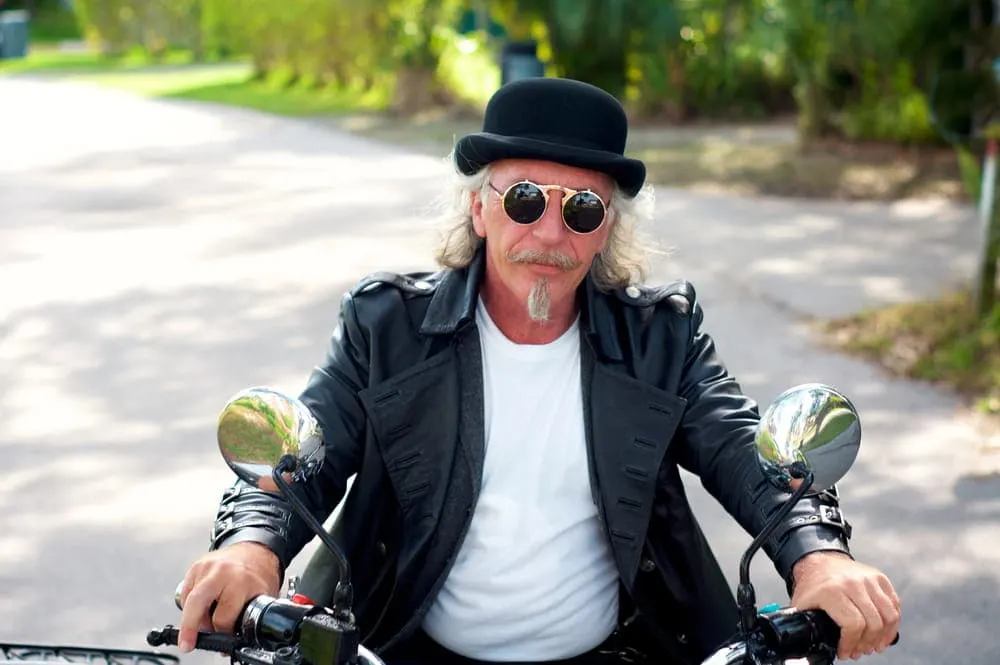
This is a style where the beard is shaped into a thin, vertical strip down the center of the chin. A chevron mustache with a landing strip beard can give you the hipster vibe.
18. Squared Van Dyke with Soul Patch

In this van dyke style variation the hair on the chin is trimmed to create a square shape, with the edges extending up to the mustache. The area under the soul patch is shaved clean, creating a small, smooth, and hairless patch on the chin.
19. Chin Strap Van Dyke Beard

This is a style where a thin strip of hair is grown along the jawline and connects to the Van dyke on the chin. The van dyke curves upward and connects with the mustache.
More Popular Van Dyke Beard Styles That You’ll Love
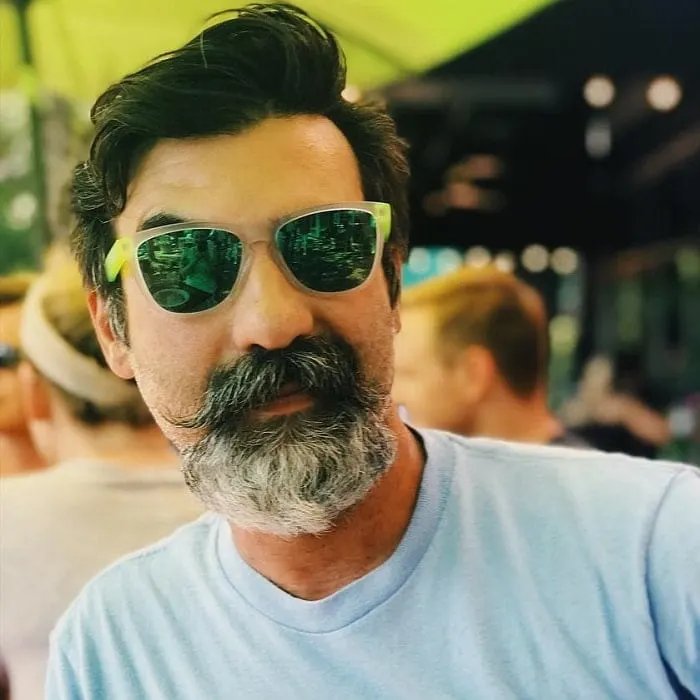
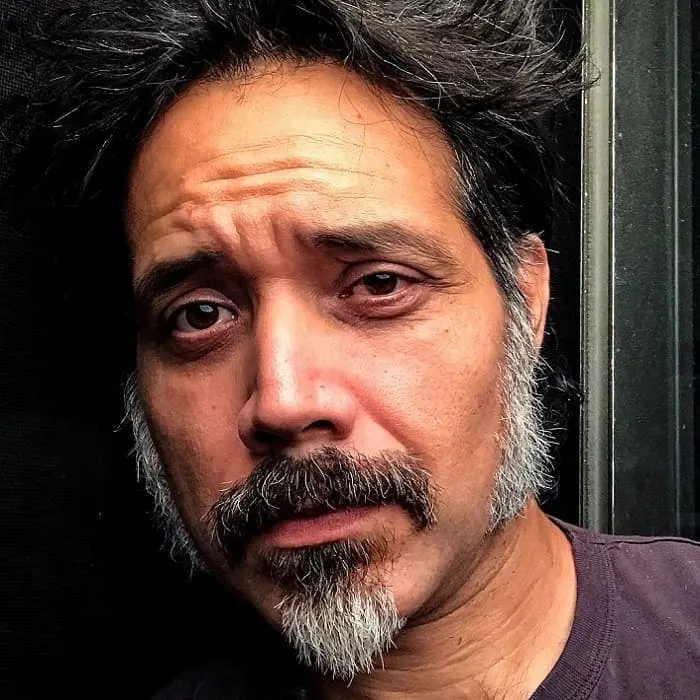

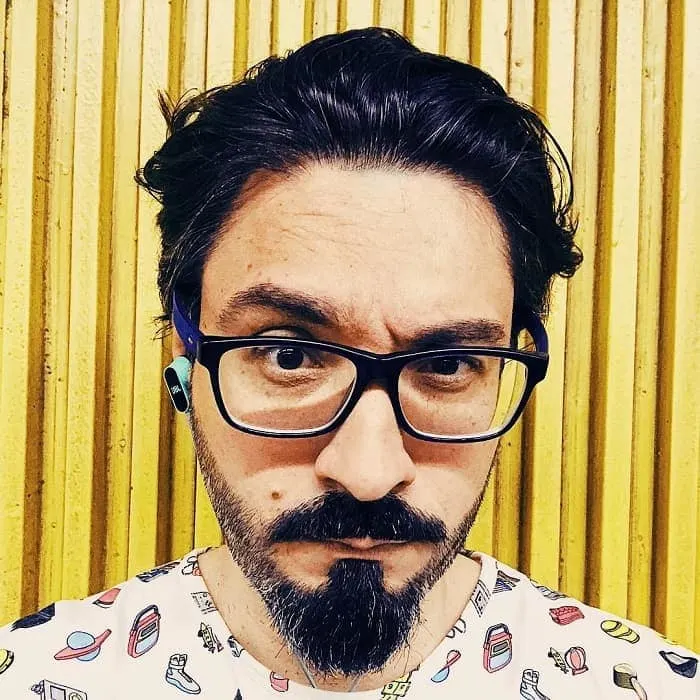
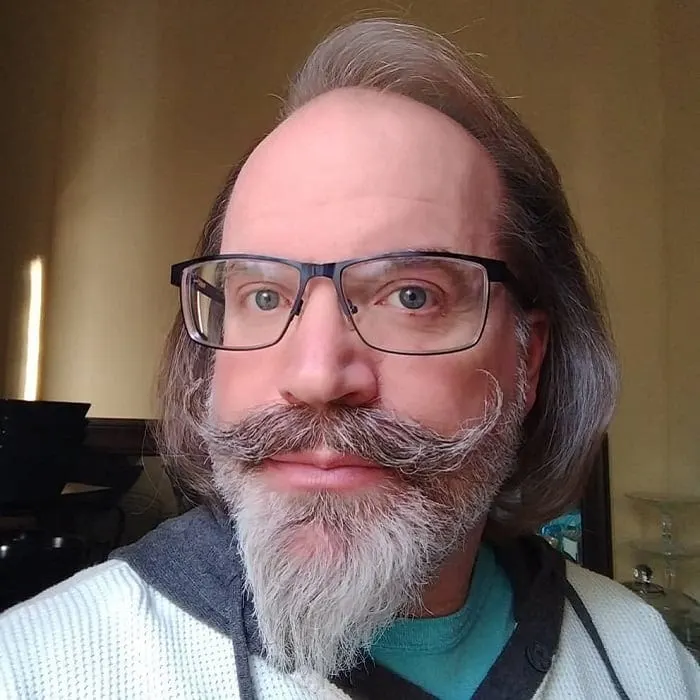

Goatee vs. Van Dyke
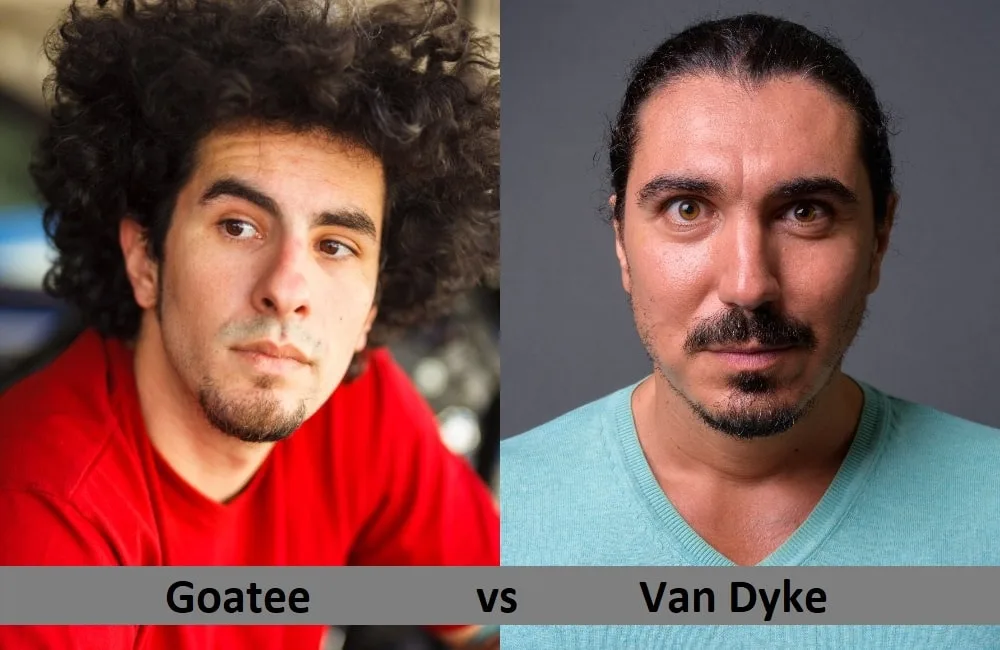
The Van Dyke beard has a lot in common with the equally variegated goatee. So much so, in fact, that the style is sometimes referred to as the “Van Dyke goatee.” This is hardly surprising, seeing as how the goatee is literally half of a classic Van Dyke beard.
The cardinal difference between a Van Dyke and a goatee is the presence of the mustache. Contrary to popular belief, the term “goatee” refers only to the hair on and around the chin.
In other words, the mustache isn’t an integral component of the goatee, whereas it’s 50% of a Van Dyke. Furthermore, the mustache and goatee are generally detached from one another, creating two separate and distinct zones of growth.
A lush goatee isn’t even a strict necessity. Though some purists might quibble about the terminology, you could also get away with growing what might be called a “Van Dyke mustache” with only a soul patch or abbreviated chin beard to serve as a counterpoint, à la Doc Holliday or Eugene Sandow.
Related Topic:
Van Dyke vs Anchor Beard: What Are the Differences?
FAQs
Here are answers to some of your most burning questions about Van Dyke beards and their well-deserved place in the Mount Rushmore of dapper facial hairstyles.
Why Is It Called a “Van Dyke” Beard?
The Van Dyke beard is named after the Flemish painter Anthony van Dyck, who was well-known for his facial hairstyle. The style also featured prominently in many of van Dyck’s portraits, indicating its widespread popularity at the time.
When Did the Van Dyke Beard Become Popular?
All manner of debonair gents has been sporting Van Dyke beards since the early 1600s.
Since then, the style has come to be associated with swashbuckling characters like Robin Hood and The Three Musketeers and no-nonsense manly men from yesteryear like Buffalo Bill, George Armstrong Custer, and Edward S. Curtis.
More recently, Van Dyke beards have been spotted on the likes of Johnny Depp, Pierce Brosnan, David Beckham, Robert Downey Jr., Christian Bale, Viggo Mortensen, and many, many others.
How Long Does It Take to Grow a Van Dyke Beard?
In most cases, slightly longer than it takes to grow a full beard. The exact length of time will vary from person to person.
However, it should be possible for most guys to cultivate a respectable Van Dyke in 2-4 months, give or take a couple of weeks. You can wait that long to be the envy of other men everywhere, right?
Take your beard style back a couple of centuries by trying out a classic Anthony Van Dyke look. On the other hand, try out one of our more modern twists on the fascinating Van Dyke beard style.

